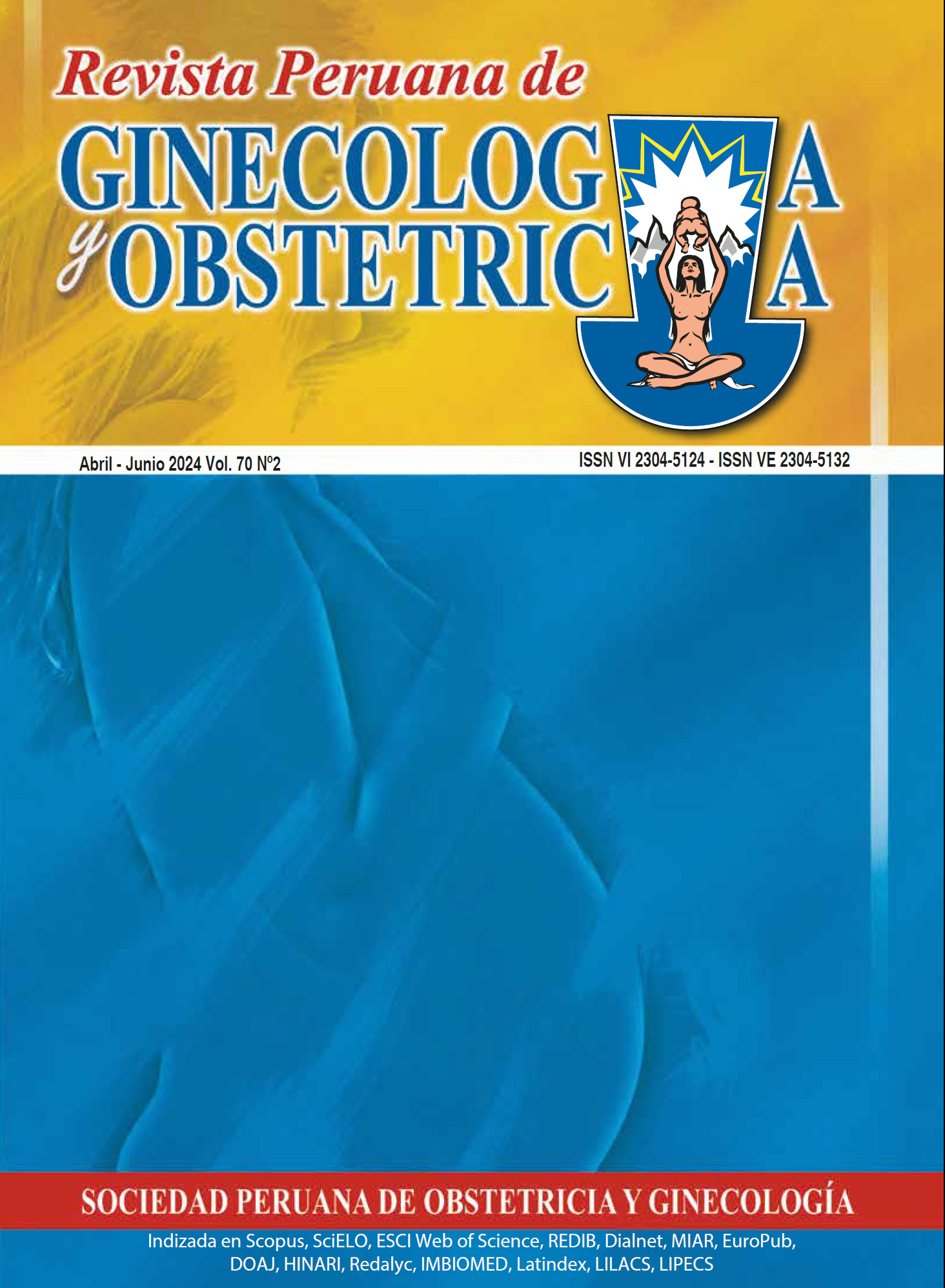Extreme maternal morbidity in the Peruvian Instituto Nacional Materno Perinatal, experience and results
DOI:
https://doi.org/10.31403/rpgo.v70i2627Keywords:
Indicators of morbidity and mortality, Morbidity, extreme, Maternal mortality, Multiple organ failure, Pregnancy outcomeAbstract
Introduction: Extreme maternal morbidity (EMM) is an indicator for estimating the
quality of obstetric care in pregnant or postpartum women with severe morbidities
who survive because of the care received in obstetric services. Objective: To determine
the causes, dysfunctions and morbidity and mortality indicators of cases of extreme
maternal morbidity attended at the Instituto Nacional Materno Perinatal between
2017 and 2023 and the results of their care. Methodology: We reviewed the medical
records of pregnant women with EMM criteria, determining causes, dysfunctions,
care and evolution, evaluating the results with morbidity and mortality indicators.
Results: In the 1,931 medical records of women with MME, the predominant etiology
was preeclampsia with 911 cases (47.2%) followed by postpartum hemorrhage
with 359 cases (18.6%). The most frequent dysfunctions between 2017 and 2020
were hepatic, respiratory and coagulation dysfunctions and, from 2021 onwards,
coagulation and cardiac dysfunctions. The MME ratio ranged from 12.7 to 26.1 x
1,000 live births. Since 2017, the case fatality indicator is 1.8 maternal deaths (MM) x
100 MME cases, and the MME/MM ratio has remained higher than 35 MME cases x 1
MM case. The criterion/case ratio in 2023 was 2.2, reflecting the severity of the cases.
Conclusion: The good quality of care of the INMP service in MME cases points to this
indicator as a strategy to reduce maternal mortality in the country.
Downloads
Downloads
Published
How to Cite
Issue
Section
License
Copyright (c) 2024 Enrique Guevara Ríos

This work is licensed under a Creative Commons Attribution 4.0 International License.
Esta revista provee acceso libre inmediato a su contenido bajo el principio de que hacer disponible gratuitamente la investigación al publico, lo cual fomenta un mayor intercambio de conocimiento global.















